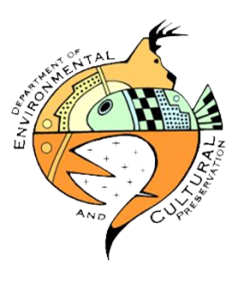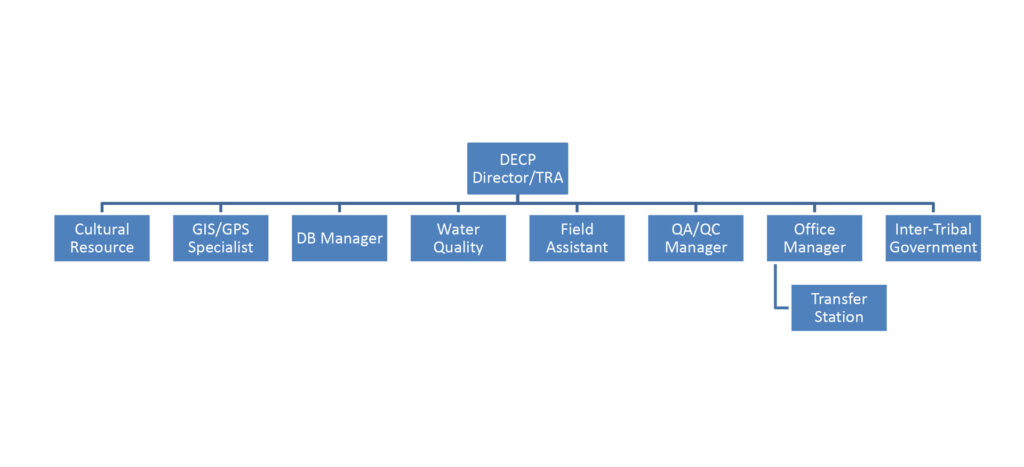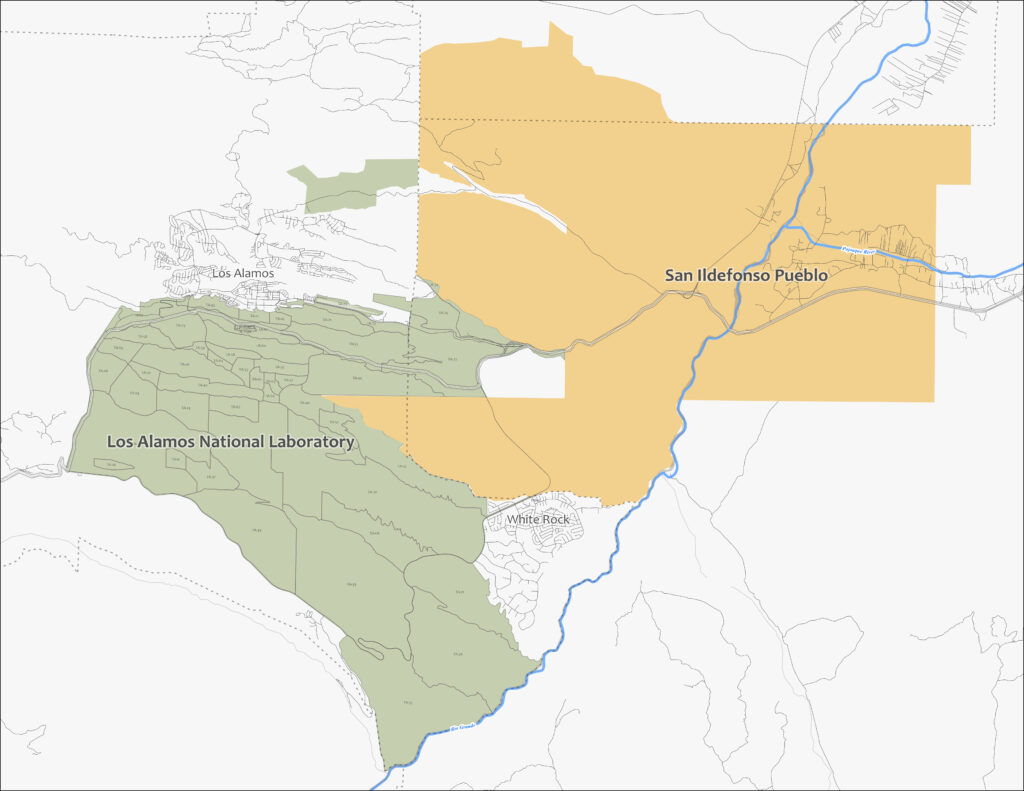DECP Organizational Chart
Pueblo of San Ildefonso Boundaries
DECP website
https://www.energy.gov/sites/prod/files/2015/10/f27/DECP_Overview_2015.pdf

Mission Statement:
“Protect and preserve the natural environment and the cultural resources of the Pueblo, and quantitatively and qualitatively assess risks to the health and welfare of the Tribal Community.”

History of the DECP
- The LAPP Accord, signed on 12/8/92, affirmed the government-to-government relationship between the Pueblo and DOE
- DOE begins funding the LAPP program, and first Director of DECP hired 12/9/96; surplus LANL trailer obtained for offices
- Other staff members gradually hired, and more grants are obtained (EPA GAP, EPA 106 WQ, EPA 103 AQ); DECP moves into new Natural Resources Building in March 2002
- DOE Technical Advisory Reviews conducted in July 2000 and July 2001 result in a “directed planning process” using EPA Data Quality Objectives (DQO) process to determine program objectives
- Quality Management Plan (QMP), and 1 and 5 Year Plans developed by DECP staff, updated each year
- The Tribal Risk Assessment (TRA) forms the foundation for the entire DECP program, since all sampling and analysis activities ultimately must be quantified into a realistic and scientifically defensible TRA
- The DECP program has developed into a highly professional, competent, and scientifically advanced environmental program and is making excellent use of the funding received from federal programs as demonstrated by the reports, maps, and tools developed and used by DECP team members
History of the Pueblo of San Ildefonso
- Ancestors migrated from Mesa Verde complex in southern Colorado by way of Pajarito Plateau
- Spanish conquistadors entered the native territory in 1598
- People of San Ildefonso participated in the Pueblo Revolt of 1680
- San Ildefonso People regained freedom of religion and other self governing rights including land recognition in 1856
- One of the eight pueblos of Northern New Mexico
- Rich in tradition, culture and art
- Followed an agricultural based economy with a recent resurgence of traditional arts
- Especially famous for black on black high polished pottery


